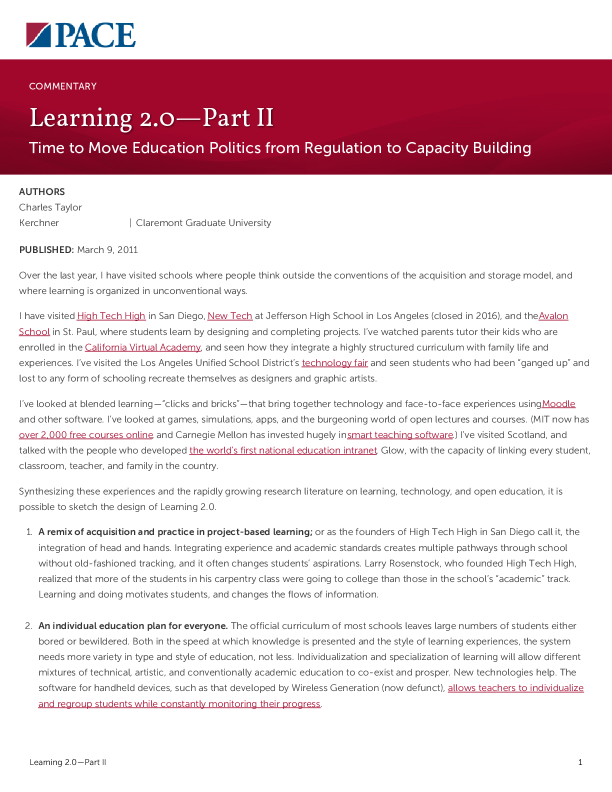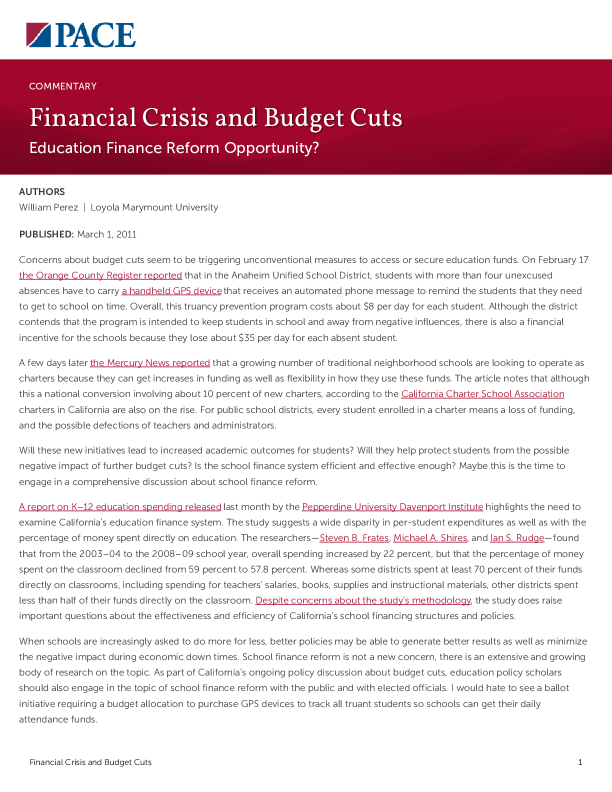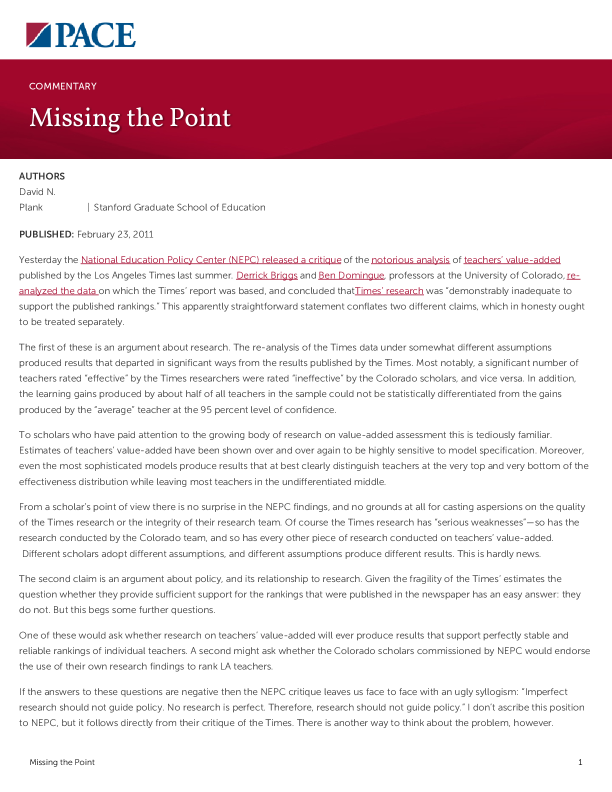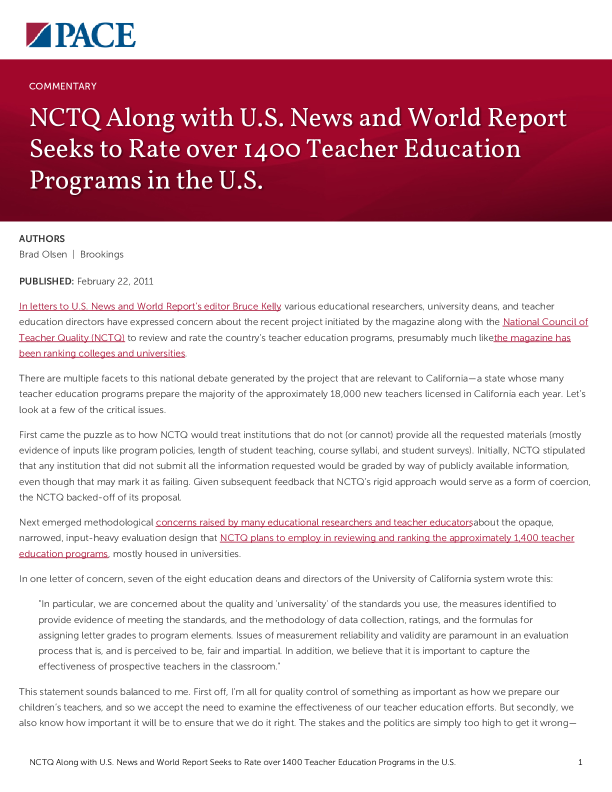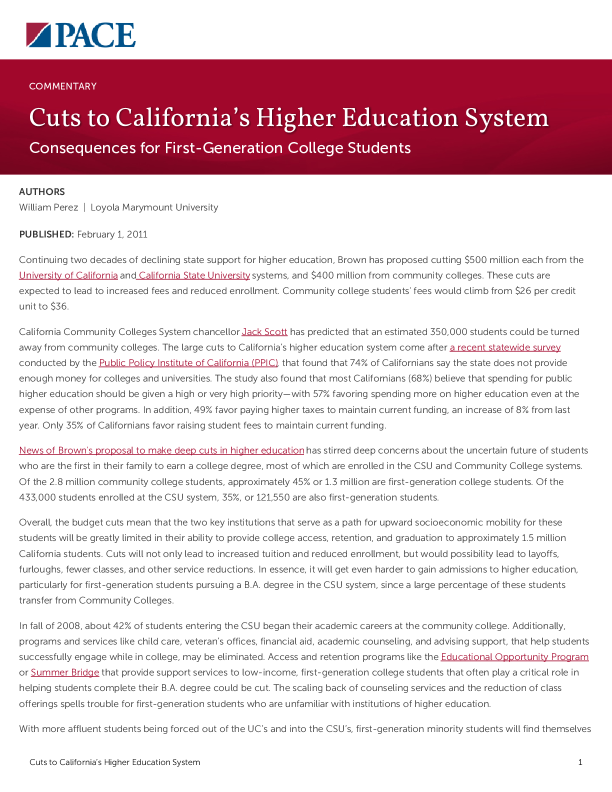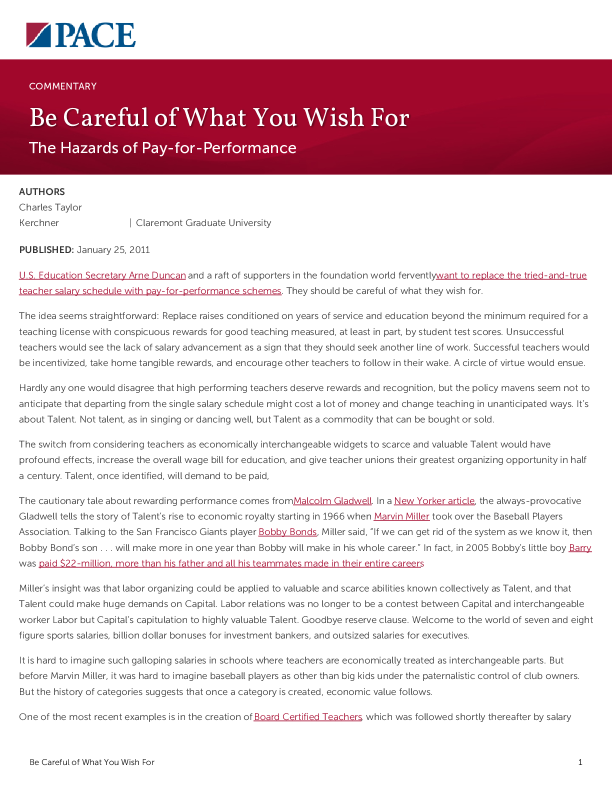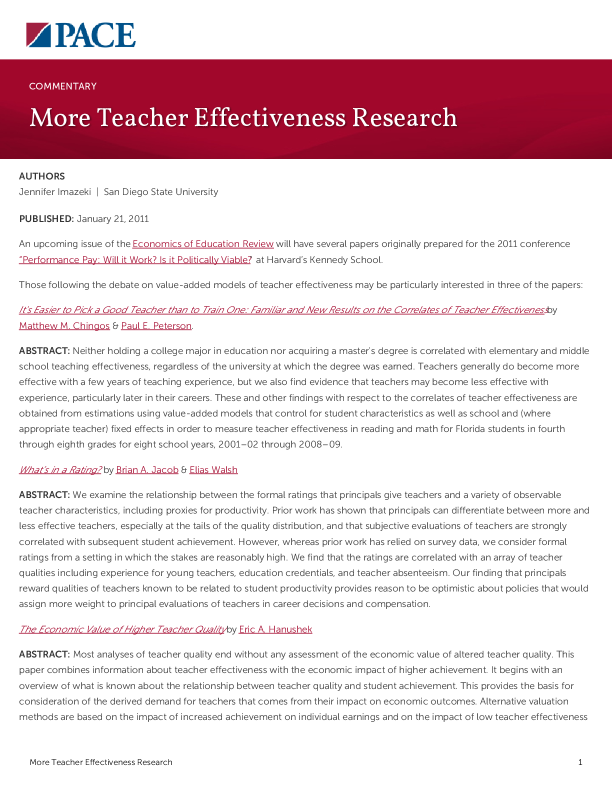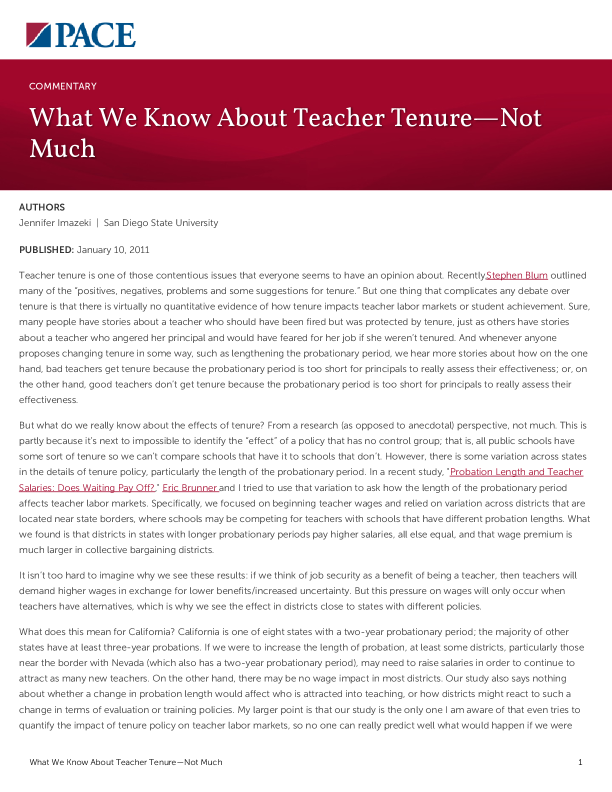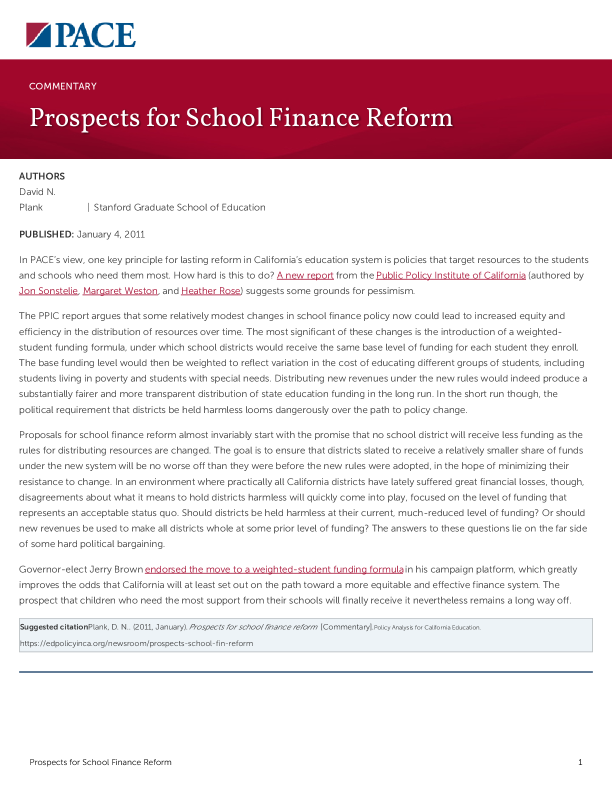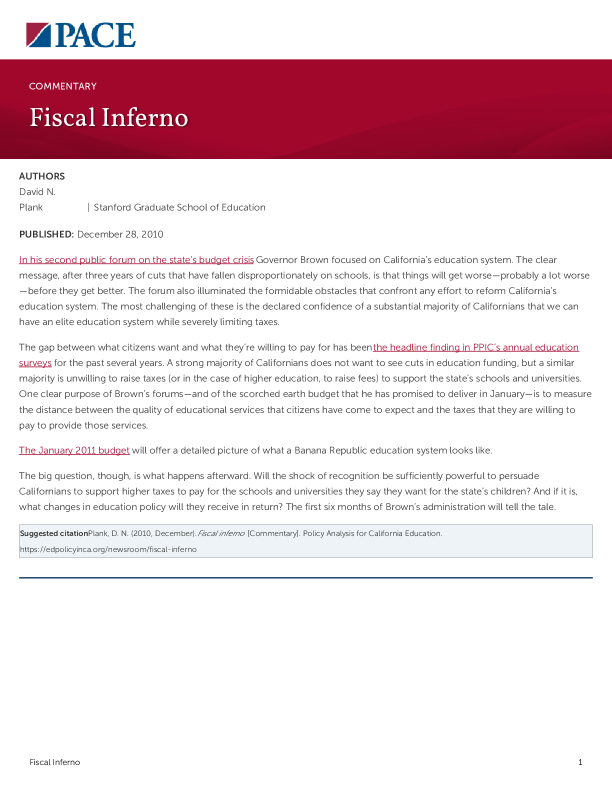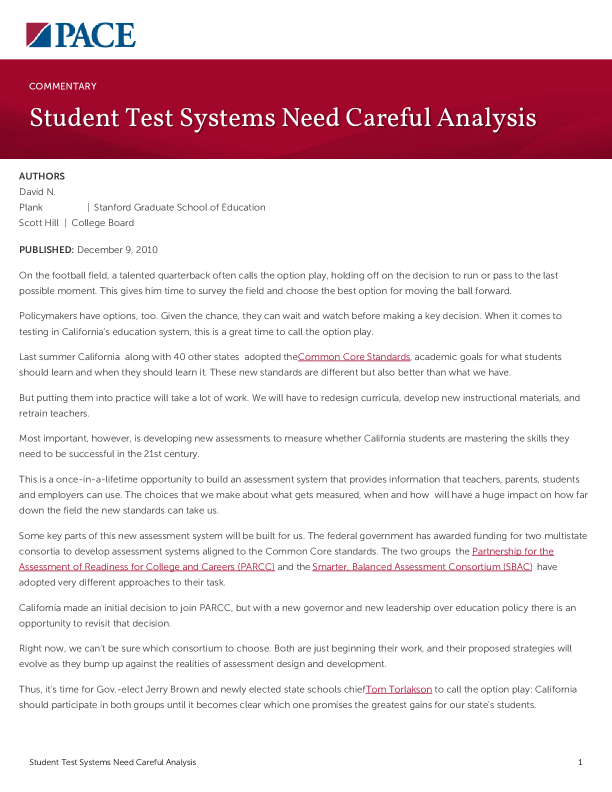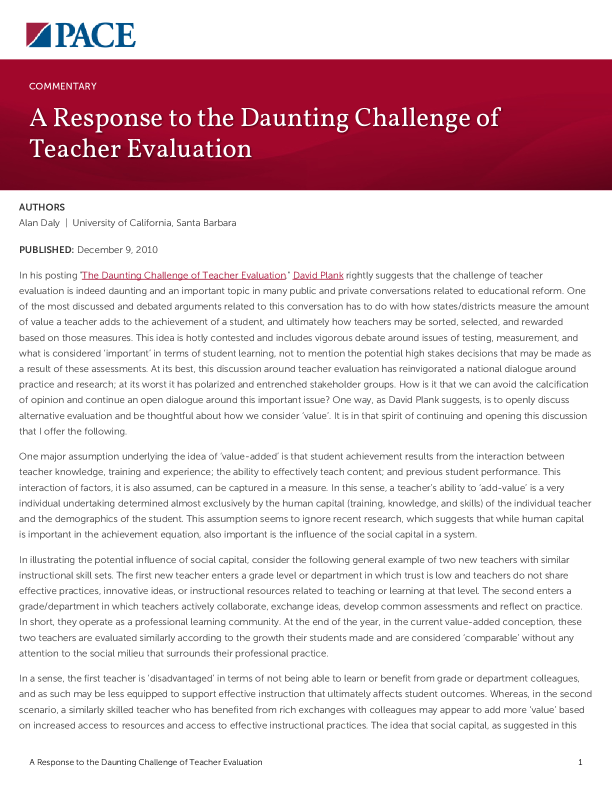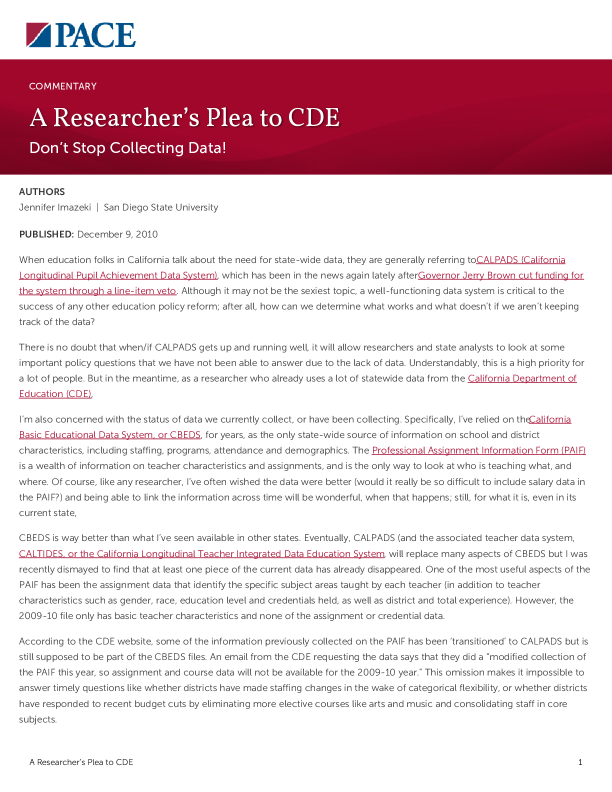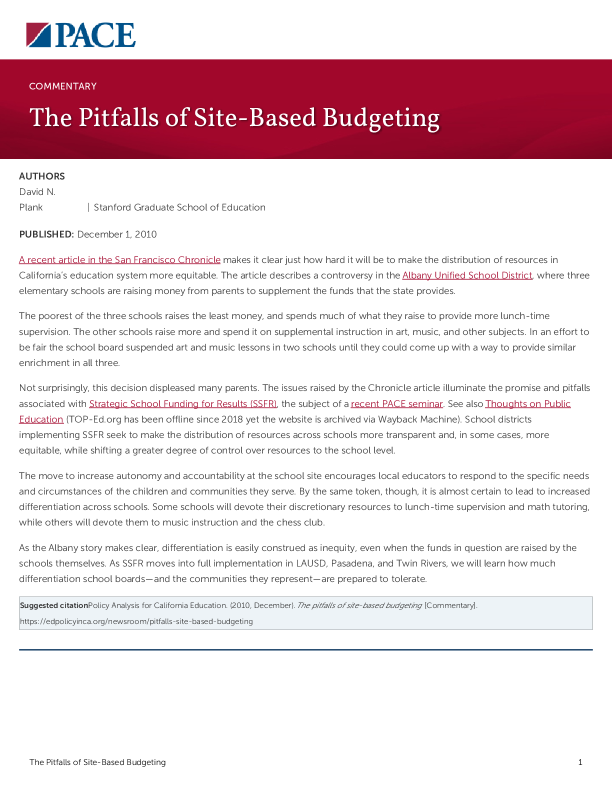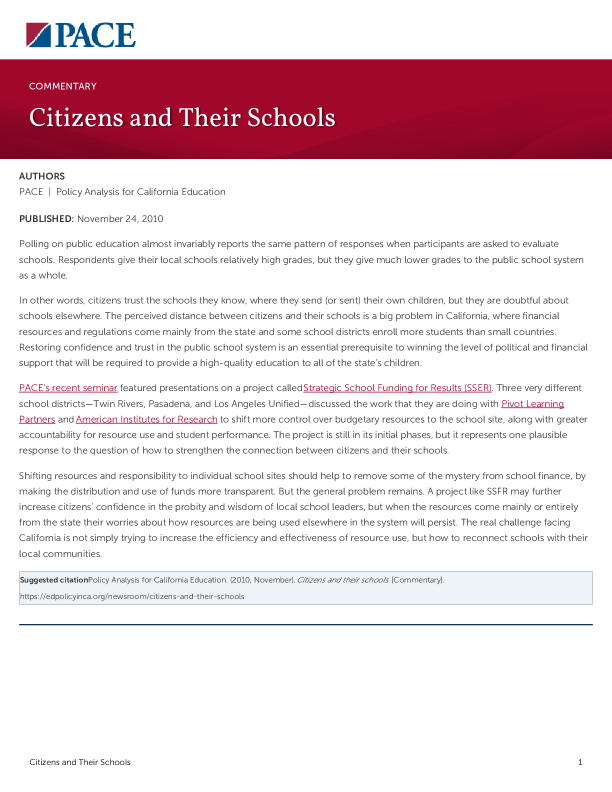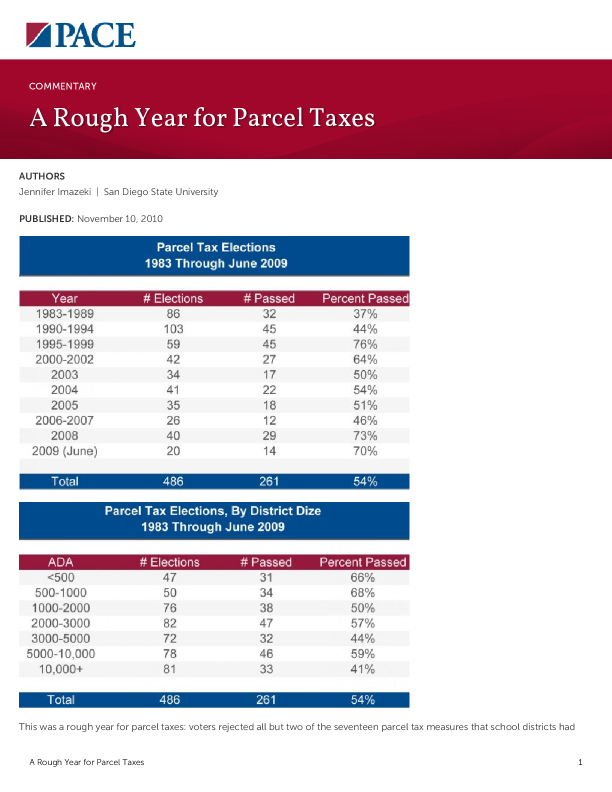Brad Olsen's recent PACE commentary examined the upcoming NCTQ/US News ratings for teacher education programs, raising broader concerns about educational accountability. He scrutinizes various evaluation methods like teacher value-added assessments, school performance metrics (AYP, API), and college rankings, highlighting their shortcomings in accuracy, stability, and susceptibility to manipulation. The debate revolves around whether imperfect information is better than none at all, questioning the pursuit of perfect measures in the face of flawed assessment systems. Despite limitations, tools like AYP and teacher value-added scores shed light on critical aspects of education. Olsen advocates for refined assessment methods, proposing enhancements for teacher education evaluations. However, until these improved metrics materialize, the existing flawed measures still provide insights, albeit imperfect ones. The debate centers on the value of utilizing imperfect data, acknowledging their flaws while acknowledging their role in revealing educational challenges. While striving for better assessments is vital, using current flawed data can offer more insights than having no information at all.
The exploration of innovative educational models in diverse schools like High Tech High, New Tech at Jefferson High School, and the Avalon School reflects a shift toward Learning 2.0. Emphasizing project-based learning, personalized education plans, and a redefined role for educators, this new paradigm seeks to break away from conventional teaching methods. It advocates for individualized learning experiences, leveraging technology to empower students and adapt education to their needs. By unbundling learning components, encouraging self-monitoring, and redefining basic skills to encompass collaborative problem-solving, Learning 2.0 aims to create a more flexible, engaging, and relevant educational system, preparing students for the complexities of the modern world while challenging traditional educational norms.
The landscape of education, currently entangled in debates over power dynamics, neglects conscious redesign of a contemporary public education system. Shifting political focus from contentious issues to understanding how students learn could birth a truly modern system. Dubbed Learning 1.0, the current structure, born in the early 20th century, relies on standardized grading, subject-specific lessons, and year-end tests, outdated in today's dynamic world. This acquisition-based model overlooks the growing trend of "just in time" learning, where knowledge is sought when needed, emphasizing integration of learning and practice. The gap between acquiring knowledge and its practical application has widened, rendering the traditional system inadequate. While cultural and political factors impede progress, the potential for Learning 2.0—a personalized, flexible, experiential model—is propelled by technological advancements and evolving perceptions of learning. Transitioning to this new paradigm necessitates not just changes in schools but also reshaping societal views on education methodologies, offering an opportunity for profound reform to meet the needs of the 21st-century learner.
California faces a pivotal challenge as it adopts common core standards amid the digital education era. The transition from printed textbooks to online resources is fraught with complexities. Practical issues like material availability, alignment with standards, and compatibility between sources pose hurdles. Statutory and legal barriers hinder the shift. Navigating these demands adept cooperation among stakeholders. Moreover, deeper quandaries loom: do traditional regulations match a tech-driven learning landscape? Can technology ensure equitable access? As California treads this transformative path, it must consider these intricacies, avoiding hasty moves in an evolving environment, balancing innovation and the needs of its students for lasting educational progress.
Amid budget cuts, schools are adopting unconventional measures for funding. Anaheim Unified School District employs GPS devices for students with unexcused absences, costing $8 daily per student, aiming to retain funding lost at $35 per absent student. Simultaneously, traditional schools switch to charters for increased funding and flexibility, impacting public schools financially. The efficacy of these initiatives on academic outcomes remains uncertain. Budget-driven decisions might harm education quality and overlook underlying issues. A Pepperdine University study exposes disparities in California’s education spending, revealing a decline in direct classroom spending despite overall funding increases. This highlights the urgency for comprehensive school finance reform, sparking discussions among policymakers, scholars, and the public. Optimizing spending efficiency becomes crucial to mitigate adverse effects during economic downturns. Engaging in informed dialogues and research is vital to avoid hasty, ineffective solutions, such as mandating GPS tracking for funding. California’s ongoing budget challenges call for a strategic reassessment of school finance policies. A collaborative effort involving stakeholders can pave the way for impactful reforms, ensuring optimal resource utilization without compromising educational standards amidst financial constraints.
As spring nears, California schools anticipate standardized tests, marking the beginning of efforts to improve education. Many schools, especially those with disadvantaged students, are likely to miss achievement goals, leading to mandatory turnaround plans. The government offers four intervention models, primarily favoring the Transformation model in California. Despite three years of funding for chosen models, their effectiveness lacks robust evidence. The challenge lies in understanding how to effectively overhaul persistently low-performing schools and maintain their progress. Data use is touted as a solution, but merely providing standardized test data without enhancing educators' ability to interpret and use it effectively might not drive meaningful change. Even in turnaround settings, there's a lack of widespread engagement with data literacy. It's crucial to engage in meaningful discussions about school turnaround now, rather than reacting impulsively after test scores release, as education policies undergo revision. To solve the complexities of school turnaround, collaboration involving diverse stakeholders is crucial. Leveraging intellectual, human, and social resources becomes imperative amidst budget constraints, aiming to secure progress for struggling schools and prevent the continued detriment of students' education.
The National Education Policy Center (NEPC) critiqued the Los Angeles Times' evaluation of teachers' value-added, citing flaws in their research. Re-analyzed data by University of Colorado professors showed significant discrepancies from the Times' rankings, a common occurrence due to the sensitivity of value-added assessments to various model specifications. This critique challenges the use of imperfect research to guide policy decisions, particularly regarding teacher rankings derived from value-added assessments. While these assessments offer insights, supplementing limited information from other sources like teachers' credentials or administrator evaluations, publishing individual teachers' value-added scores in newspapers, as done by the Los Angeles Times, remains contentious. NEPC's critique prompts reconsideration of using imperfect data in evaluating teacher effectiveness, acknowledging its potential as a supplement to other information sources. The debate shifts from the research's imperfections to its role within a broader context of teacher assessment and policy decisions. However, the critique's focus on research quality doesn't fully address the complexity of using such assessments in policymaking and evaluation.
Educational stakeholders have raised concerns about the collaboration between U.S. News and World Report and the National Council on Teacher Quality (NCTQ) to evaluate teacher education programs. The initiative aims to rank these programs akin to colleges and universities. Issues encompass NCTQ's approach to institutions unable to provide all requested materials and methodological concerns regarding their evaluation design. Leaders from the University of California system questioned the evaluation's standards, evidence measures, and methodology's reliability. The debate centers on balancing the need for rigorous assessment with the intricacies of teacher preparation. While recognizing the importance of evaluating teacher education quality, there's contention over the adequacy of NCTQ's approach. Suggestions propose a comprehensive study design encompassing various data analyses, including classroom interactions, program practices, alumni feedback, student teacher evaluations, and selective use of value-added analyses. California is proposed to lead an innovative, mixed-methods evaluation, potentially setting a benchmark for other states. The goal is to strike a balance between rigor and a nuanced understanding of teacher preparation, aiming for an evaluation approach that comprehensively reflects program quality while acknowledging its complex nature.
Tierney and García's study in American Behavioral Scientist reevaluates their prior research on the Early Assessment Program (EAP) in Los Angeles, revealing minimal awareness among students about EAP and its impact on college readiness. Their findings question the program's efficacy, highlighting students' lack of comprehension and scarce access to preparatory courses. While their study indicates negligible influence on student behavior and educator actions, it prompts crucial policy considerations about the value of information in student decision-making. Despite criticisms of EAP's limited evidence of effectiveness, the study doesn't conclusively support or dismiss the program's efficacy, leaving policymakers to weigh its future against potential alternatives in the national assessment landscape.
California's proposed massive cuts to higher education, slashing $500 million from UC and CSU and $400 million from community colleges, will raise fees, reduce courses, and limit enrollment. Chancellor Jack Scott predicts turning away 350,000 community college students, significantly impacting the 45% of first-generation learners. CSU's 35% first-generation population also faces constraints. These cuts affect crucial support programs, services, and class availability, particularly for counseling and childcare. Wealthier UC students shifting to CSUs may intensify competition, disadvantaging vulnerable students. Public dissatisfaction, highlighted by a Public Policy Institute of California study, stresses concerns about affordability and borrowing. Possible solutions, like a sliding-scale tuition system based on family income, supported by 72% of Californians, aim to ease access barriers. Discussions must protect these students and explore strategies ensuring their access and success in higher education, securing California's future.
The push for pay-for-performance teacher salaries could revolutionize education by valuing teaching as specialized talent. This shift, prompted by U.S. Education Secretary Arne Duncan and supporters, aims to reward exceptional teaching through test score-based incentives. However, this transition could significantly raise education expenses and transform the teacher compensation structure. Drawing parallels with Marvin Miller's revolutionizing baseball players' wages, the switch from uniform teacher salaries to valuing exceptional talent may yield unpredictable effects. Recognizing and promoting exceptional teachers could mimic how colleges offer star professors premium wages. Yet, envisioning a system where teacher talent determines compensation might generate brutal competition, creating substantial salary disparities among educators. While this approach celebrates exceptional teachers, it's uncertain how this would impact overall teacher wages and the teaching profession as a whole. Considering the historical rise of wages in specialized fields, proponents of this shift may not have accounted for the potential salary demands that valuing teacher talent could create.
The upcoming Economics of Education Review issue presents papers from the “Performance Pay: Will it Work? Is it Politically Viable?" conference at Harvard’s Kennedy School. Three papers stand out: One paper debunks the correlation between education degrees and teacher effectiveness but notes an improvement with experience, which might later decrease; Another paper examines how formal teacher ratings by principals relate to teacher traits like experience, education, and absenteeism, suggesting their usefulness in career decisions; A final paper explores the economic impact of teacher quality on student achievement, revealing the considerable added value a highly effective teacher brings to students' future earnings and proposing significant gains if low-performing teachers are replaced.
Alan Daly's recent commentary delves into the debate surrounding what qualifies as a "highly qualified" teacher, stemming from recent legislation that broadened this definition, impacting both human and social capital in schools. He highlights the significance of social capital, emphasizing that teachers in supportive environments tend to perform better. The bill allows alternative path teachers to be deemed "highly qualified," recognizing their capability despite lacking state certification, a move not strongly supported by evidence. However, the legislation adversely impacts social capital. It aligns with California's education code favoring seniority in layoffs, disproportionately affecting newer teachers in challenging schools. Layoffs in these schools disrupt stability and equitable teacher distribution, contrary to the lawsuit's aim for fairer teacher allocation. By removing a potential tool for equalizing teacher distribution, Congress risks exacerbating inequalities in schools, especially those serving disadvantaged students, which might not significantly affect individual teaching talent but undoubtedly damages social capital where it's needed most.
The focus on John Deasy's role as a "reformer" and political alliances obscures the deep-seated challenges facing the Los Angeles Unified School District (LAUSD). Despite Gov. Jerry Brown's budget showing no severe cuts for education, the district confronts fiscal and demographic pressures that could lead to its collapse. LAUSD grapples with declining enrollment due to shifting demographics, losing over 135,000 students in the past decade, leading to a drastic reduction in revenue. Simultaneously, expenses for special education and healthcare have surged significantly, adding financial strain. Special education demands more costly services, while health care costs have risen by 71% since 2002. While potential state revenue decreases may slightly mitigate the impact, the district's survival hinges on Governor Brown's budget approval and voter support for tax extensions. Historical research shows that past reform efforts in the district faced fiscal challenges, indicating that political maneuvers won't alter this reality. Effective changes in education will rely on hard-working individuals navigating these tough financial constraints, echoing the ongoing struggle amid financial limitations for innovative educational initiatives.
The debate on teacher tenure lacks concrete quantitative evidence regarding its impact on teacher labor markets or student achievement. Stories of tenure's effects exist, but research is scarce due to the absence of a control group—every public school operates with some form of tenure. However, variations in tenure policies across states, particularly in probationary period lengths, offer insight. Researchers show that longer probation periods correlate with higher starting teacher salaries, especially in districts with collective bargaining. This is because job security as a benefit leads to teachers demanding higher wages in exchange for increased uncertainty. California, with a two-year probationary period, may face salary pressures, especially in districts bordering states like Nevada with different tenure policies. Extending the probation period might lead to salary hikes in certain districts to attract teachers. However, it's uncertain how this change might influence who enters teaching, district responses in terms of evaluation or training, or its overall impact. Further research on tenure's effects on teacher labor markets is necessary to better inform this significant policy debate.
A new PPIC report highlights the challenge of directing resources to needy schools in California. It suggests a weighted-student funding formula for fairer resource allocation, emphasizing equal base funding per student with additional support for diverse needs. Yet, the short-term hurdle lies in the political demand to maintain current district funding levels, hindering policy changes. Proposals ensure no district loses funds during reforms, aiming to minimize resistance. However, with statewide financial setbacks, debates arise over defining "hold harmless"—maintaining reduced funding or restoring previous levels. Governor-elect Jerry Brown's backing for this model improves the likelihood of reform, but achieving equitable support for vulnerable students faces political negotiation, making the realization of improved education funding for those in need a distant objective.
Governor Brown’s focus on California’s budget crisis emphasized looming challenges for the education system. Despite years of cuts predominantly affecting schools, further deterioration is expected. Reforming education faces a major hurdle: Californians desire an elite system but resist higher taxes. Current Public Policy Institute of California (PPIC) surveys reveal this gap between citizens wanting quality education without funding sacrifices. Brown’s imminent severe budget aims to highlight the disparity between expected educational standards and the willingness to pay for them. The January 2011 budget will depict the state's education system under strain. The crucial test lies in whether this realization motivates support for increased taxes to fund desired education, determining subsequent policy changes in Brown’s early tenure.
The adoption of Common Core Standards in California's education system presents an opportunity for comprehensive assessment reform. With the implementation of new standards comes the need for aligned assessments to measure student proficiency accurately. California, initially aligning with the PARCC consortium, now has a chance to reassess its decision under the leadership of Governor Jerry Brown and State Schools Chief Tom Torlakson. The state has options between PARCC and SBAC consortia for assessment alignment but lacks clarity on which system will best serve students' needs. To navigate this uncertainty, California should temporize and participate in both consortia until their approaches crystallize. Key elements of a robust assessment system include computer-adaptive testing, early tracking of college readiness, meaningful high school exit exams, measuring college and career readiness, and involving teachers in assessment development. California's leaders need to ensure the chosen assessment system meets these criteria. By delaying a definitive choice, the state can weigh each consortium's evolution to make an informed decision aligning with California's educational goals.
David Plank’s commentary insights highlight the complexities in teacher evaluation, sparking debates about how to measure a teacher’s impact on student achievement and how assessments could affect teachers' careers. The discussion around "value-added" assessment has divided opinions, focusing on testing, measurement, and what defines significant learning. Plank suggests maintaining an open dialogue by exploring alternative evaluation methods and reconsidering the concept of 'value.' The 'value-added' assumption rests on the teacher's individual abilities and student demographics, overlooking the potential influence of social capital within an educational system. Research suggests that social capital, like collaborative teacher communities, profoundly impacts teacher effectiveness. Consider two equally skilled new teachers: one in an environment lacking collaboration and shared practices, the other in a supportive, collaborative community. Despite similar abilities, the latter might demonstrate higher 'value-added' due to better access to resources and shared practices. This perspective underscores the importance of social capital alongside human capital in assessing teacher effectiveness. It encourages rethinking evaluation systems to account for the supportive or constraining impact of social relations on a teacher's ability to enhance student learning. Integrating social capital into evaluation discussions could significantly enhance educational reform efforts.
The statewide data system, CALPADS, essential for education policy evaluation, faced funding cuts under Governor Jerry Brown's recent veto, drawing attention to its significance. CALPADS promises to provide comprehensive data for researchers and analysts, addressing critical policy questions. However, the existing data sources like CBEDS and PAIF have been invaluable for assessing statewide education trends, although some crucial details seem to have vanished in the transition to CALPADS. The Professional Assignment Information Form (PAIF) previously held detailed teacher assignment data, vital for understanding staffing changes, course offerings, and district responses to budget cuts. However, the 2009-10 file lacks this essential information, hindering timely assessments. The California Department of Education's (CDE) transition to CALPADS seems to have caused this data gap, raising concerns among researchers. While CALPADS is expected to integrate credential information in CALTIDES by 2012, the current absence of this critical data poses challenges for immediate research needs. Addressing these transitional issues is crucial to maintaining essential information sources amid the uncertainties in California's education landscape.
The California Teachers Association's preliminary assessment of the Quality Education Investment Act (QEIA) showed positive outcomes, yet it is a disappointing occasion for two key reasons. Firstly, QEIA's implementation coincided with severe budget cuts in California, limiting its intended significant boost for struggling schools to merely shielding them from the fiscal crisis rather than driving transformative change. Secondly, QEIA's evaluation, designed as a quasi-experiment, lacks the essential randomized assignment of funds, hindering any conclusive understanding of the impact of these resources. The evaluation's ongoing focus on case studies won't offer substantial insight into QEIA's effectiveness, portraying it as a missed chance for impactful educational improvement.
The Albany Unified School District's funding disparity among its elementary schools highlights the challenges in achieving fair resource distribution. With one school raising less money than the others, the board suspended art and music lessons in the better-funded schools, aiming for equity. However, this decision sparked discontent among parents. This situation reflects the complexities of Strategic School Funding for Results (SSFR) initiatives. While SSFR aims for equitable resource allocation and empowers schools, it also allows for diverse spending priorities. As SSFR expands in districts like LAUSD and Pasadena, it raises questions about the balance between school autonomy and ensuring fair resource distribution, as seen in the Albany case.
In education polling, people often rate their local schools highly but give lower scores to the overall public school system. This gap in trust between citizens and the broader system poses a significant issue in California due to its vastness and reliance on state resources. Rebuilding trust in the public school system is crucial for garnering necessary political and financial support. PACE’s recent seminar showcased Strategic School Funding for Results (SSFR), a project in districts like Twin Rivers, Pasadena, and Los Angeles Unified. It aims to grant more autonomy over budgets to individual schools while increasing accountability for resource use and student performance. This shift might enhance transparency in fund allocation but doesn’t solve the broader issue. While boosting confidence in local leadership, concerns about resource usage elsewhere in the system persist. California’s real challenge lies in reconnecting schools with their communities beyond merely enhancing resource efficiency.
Aligning the new educational standards with effective assessments in California is vital for enhancing school and student performance. For the governor of California, ensuring this alignment carries multiple benefits. It showcases a commitment to educational improvement, demonstrating proactive governance and addressing critical issues in the state’s education system. Successful alignment reflects leadership in driving educational reform and promoting accountability in the state. It also positions the governor as a proponent of student-centered learning and ensuring fair evaluation methods, showcasing dedication to student success and advancement. Additionally, it helps in securing federal funding and support for educational initiatives, portraying a strong vision for quality education in California.
In a challenging economic climate, only two of seventeen proposed parcel tax measures for school funding passed this year. Parcel taxes, flat taxes per property parcel, offer districts a means to raise additional revenue for specified purposes. While historically, California districts have had some success with parcel taxes, recent elections have seen varying results. Between 1983 and 2009, voters approved about half of the 486 parcel tax elections, primarily favoring smaller, higher-income communities. However, only a fraction of districts attempted to pass parcel taxes, with success rates skewed toward wealthier areas. The success of these taxes, even under different voting thresholds, remains unpredictable as altering the threshold might impact voter turnout and campaign spending. This year's rejection of most parcel tax proposals underscores the difficulty districts face in garnering local revenue, emphasizing the limited control California districts have over their funding sources.

